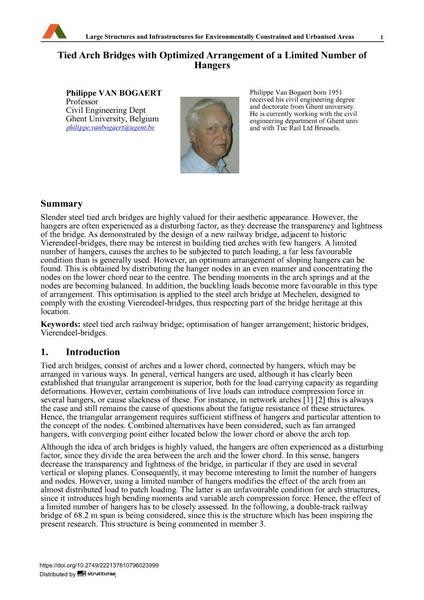Tied Arch Bridges with Optimized Arrangement of a Limited Number of Hangers

|
|
|||||||||||
Détails bibliographiques
| Auteur(s): |
Philippe Van Bogaert
|
||||
|---|---|---|---|---|---|
| Médium: | papier de conférence | ||||
| Langue(s): | anglais | ||||
| Conférence: | IABSE Symposium: Large Structures and Infrastructures for Environmentally Constrained and Urbanised Areas, Venice, Italy, 22-24 September 2010 | ||||
| Publié dans: | IABSE Symposium Venice 2010 | ||||
|
|||||
| Page(s): | 150-151 | ||||
| Nombre total de pages (du PDF): | 7 | ||||
| Année: | 2010 | ||||
| DOI: | 10.2749/222137810796023999 | ||||
| Abstrait: |
Slender steel tied arch bridges are highly valued for their aesthetic appearance. However, the hangers are often experienced as a disturbing factor, as they decrease the transparency and lightness of the bridge. As demonstrated by the design of a new railway bridge, adjacent to historic Vierendeel-bridges, there may be interest in building tied arches with few hangers. A limited number of hangers, causes the arches to be subjected to patch loading, a far less favourable condition than is generally used. However, an optimum arrangement of sloping hangers can be found. This is obtained by distributing the hanger nodes in an even manner and concentrating the nodes on the lower chord near to the centre. The bending moments in the arch springs and at the nodes are becoming balanced. In addition, the buckling loads become more favourable in this type of arrangement. This optimisation is applied to the steel arch bridge at Mechelen, designed to comply with the existing Vierendeel-bridges, thus respecting part of the bridge heritage at this location. |
||||
| Mots-clé: |
ponts historiques
|
||||
